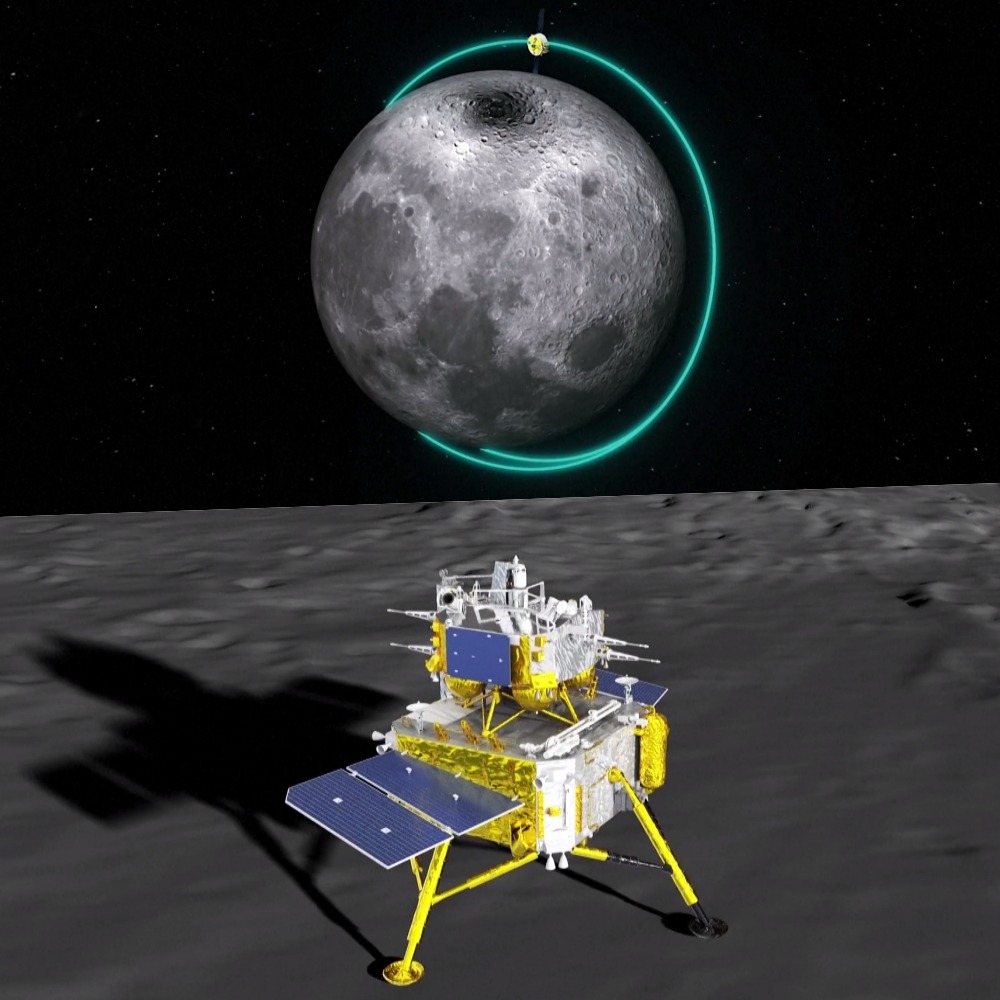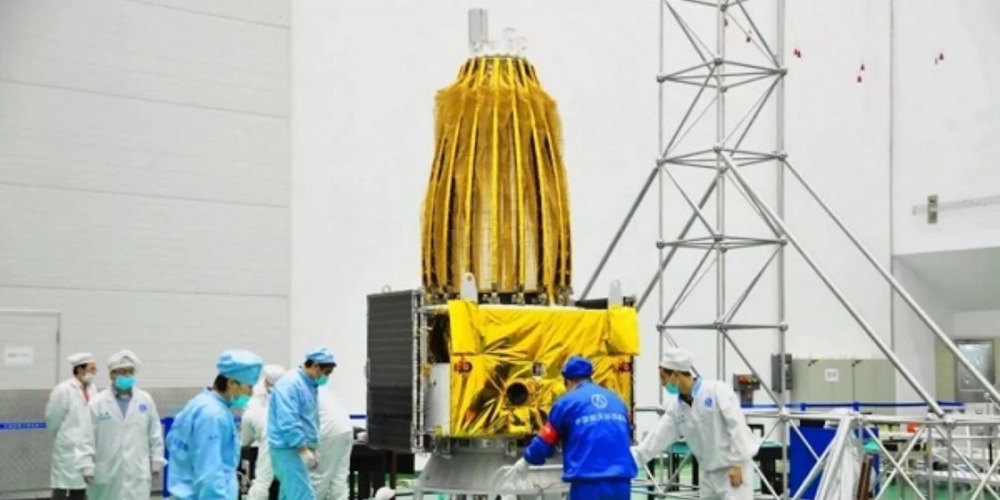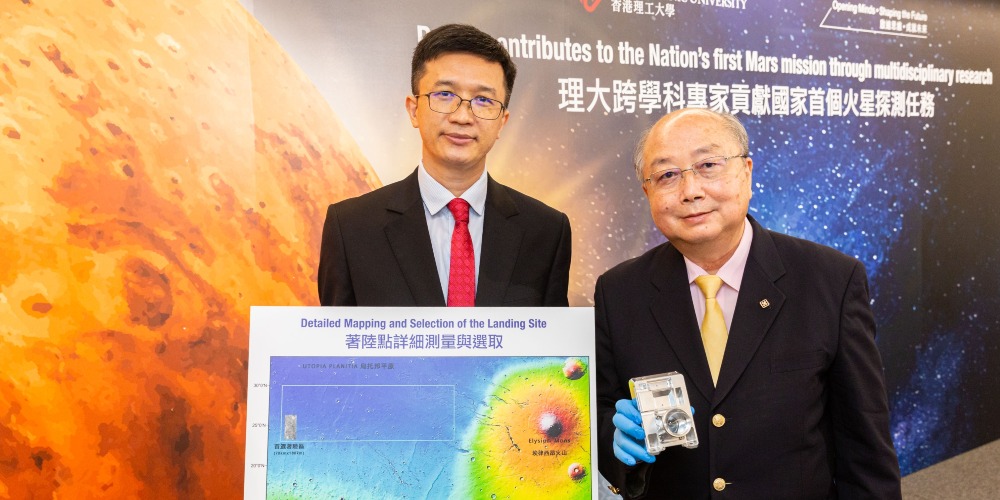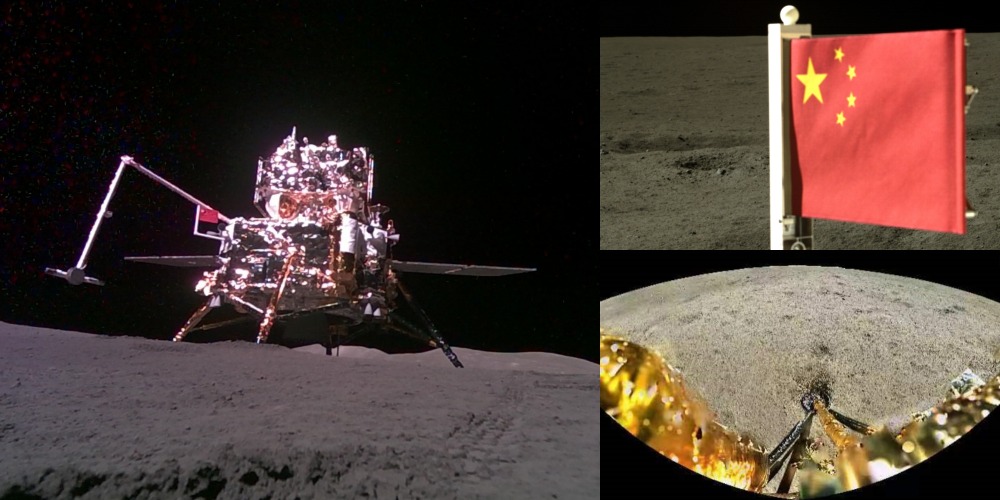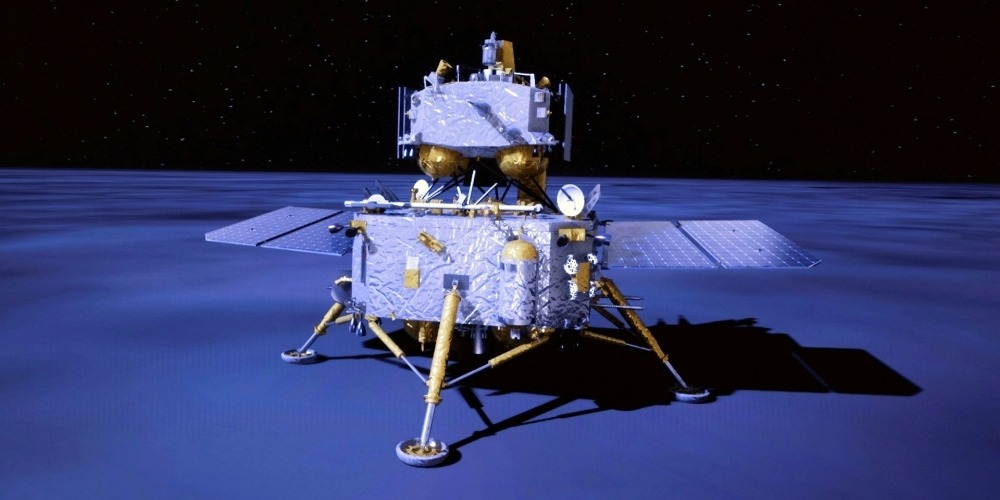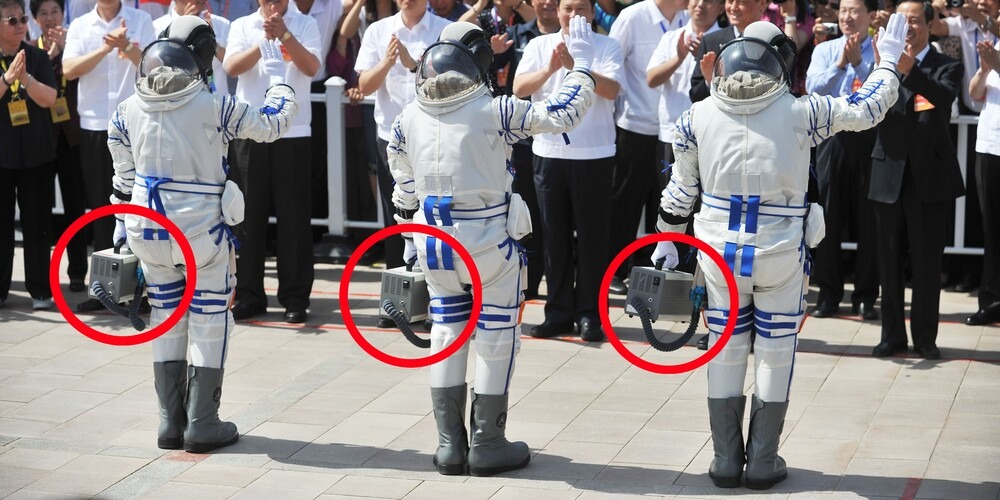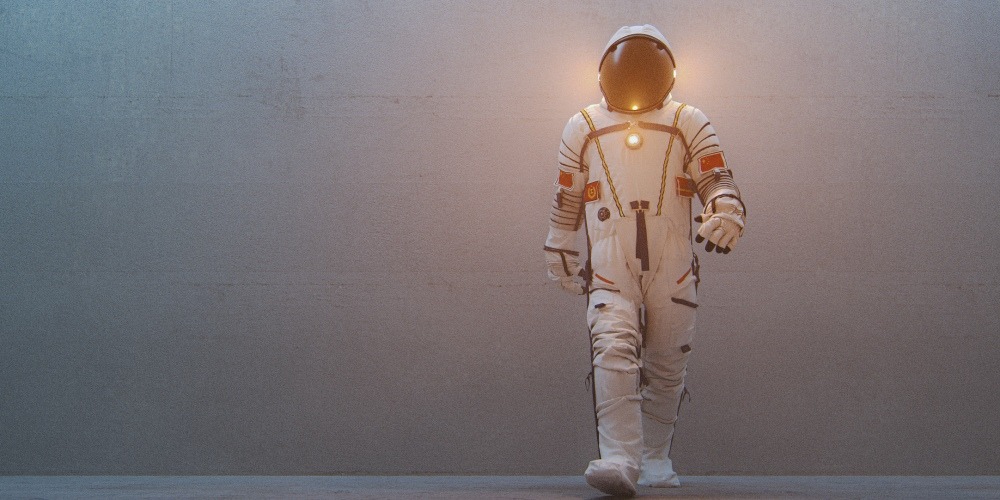Published on : 08/05/2024
Chang'e-6 is a key part in the fourth phase of China's lunar exploration programme, completing critical tasks such as collecting and returning samples from the moon's mysterious far side.
On May 8, Chang'e-6 successfully performed a near-moon braking procedure and smoothly entered the circumlunar orbit.
First-ever landing on the moon's far side
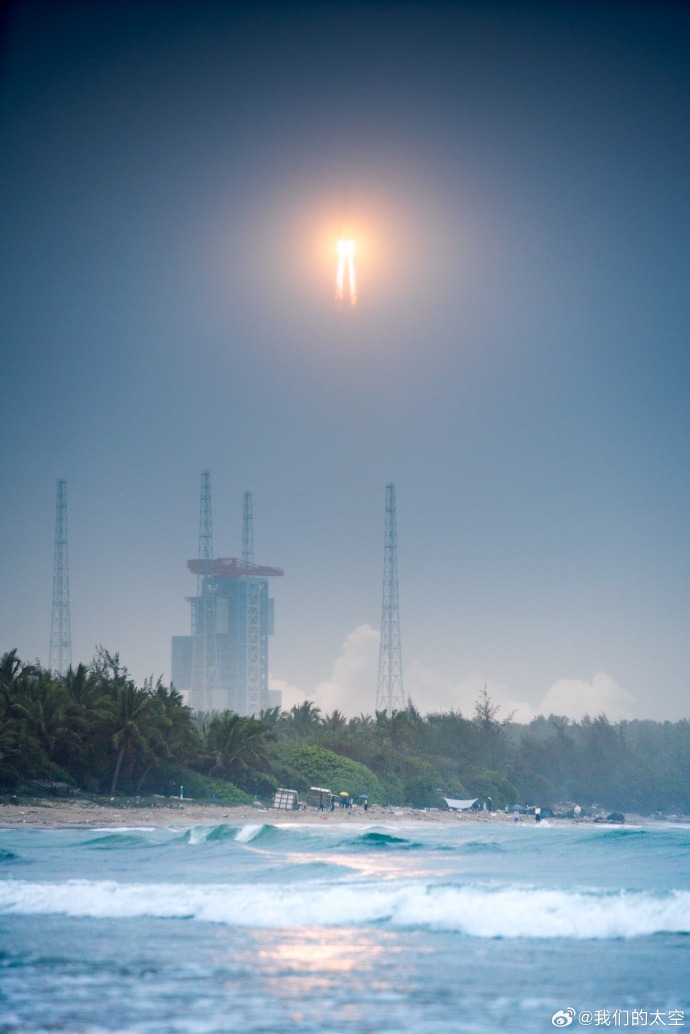
From launch to return, the entire mission of Chang'e-6 is expected to take 53 days. After entering lunar orbit on May 8, it will take about 20 days to adjust its position and prepare for landing.
Subsequently, Chang'e-6 will begin landing and work on the surface of the moon for 48 hours to obtain lunar samples.
After the sampling is done, the ascender will take off for rendezvous and docking with the orbiter-returner combination.
One of the most notable things of the mission is the selection of the landing site.
Chang'e-6 plans to land on the northeast side of the South Pole-Aitken (SPA) Basin of the far side of the moon, which is the oldest impact crater in the solar system.
The far side of the moon always faces away from Earth due to the synchronisation of the moon's revolution and rotation.
Global missions of returning lunar sample have been conducted more than ten times, all of which were conducted on the near side of the moon. But there may be older lunar soil on the far side.
Therefore, no matter what kind of lunar soil Chang'e-6 harvests from the far side, the sample will be of high scientific value.
Read more: Chang'e-6 Expedition, the first endeavour of its kind in the history of human lunar exploration
HKU to unravel the mystery of the moon's two sides?
In the case of previous mission, the samples of lunar soil were supplied to various scientific teams for research.
The University of Hong Kong (HKU) is currently the only institution in Hong Kong that has successfully applied for lunar soil samples obtained from the near side of the moon by Chang'e-5, and has also participated in the research of the Chang'e-6 landing area.
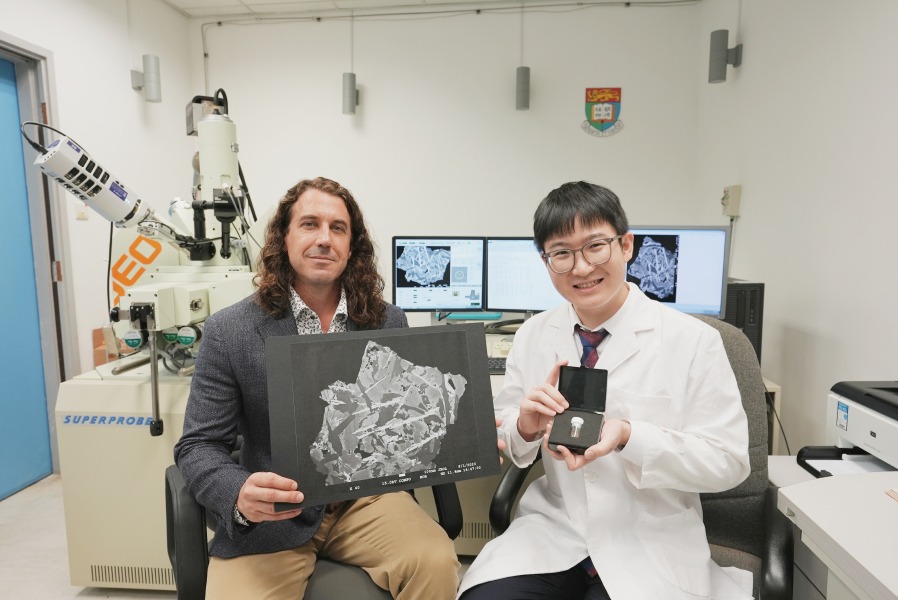
Dr. Qian Yuqi, Postdoc Fellow at the Department of Earth Sciences of HKU, revealed to the media that HKU plans to apply for the first batch of samples as soon as they are available from Chang'e-6 later this year.
With the accumulation of research of the previous Chang'e-5 samples, the team will study the Chang'e-6 samples to fully exploit their scientific value.
"The samples from Chang'e-5 come from the near side of the moon, and the samples from Chang'e-6 come from the far side of the moon. If we can get the Chang'e-6 samples, we might be able to answer why there are differences between the two sides of the moon. This is one of the biggest questions in science about the moon," said Dr. Qian.
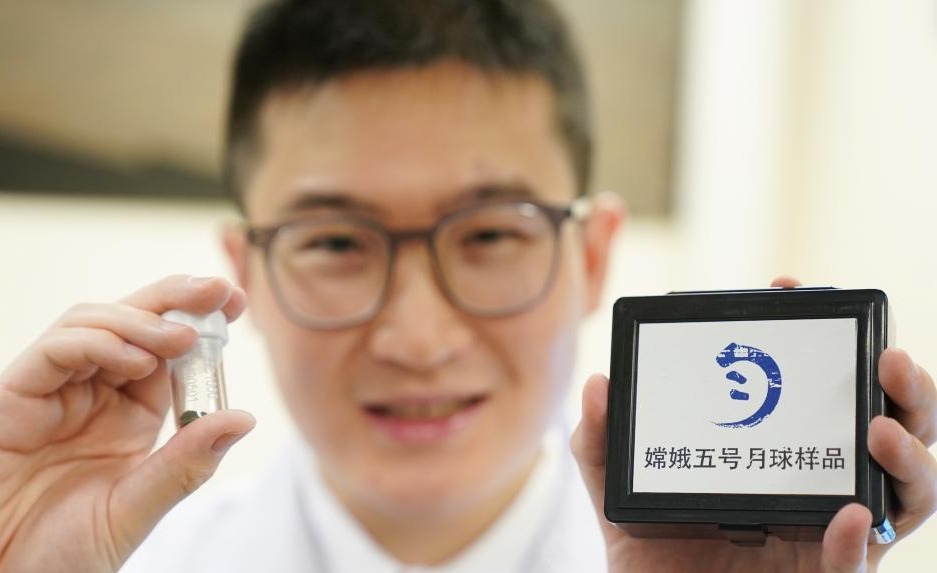
Chang'e-6 carries out multiple scientific explorations
In addition, Chang'e-6 also brought four international "packages" - payloads from different countries, to carry out multiple scientific explorations, which include a French radon detector for in-situ measurement of lunar surface radon isotopes, and a lunar surface negative ion analyser from the European Space Agency (ESA).
There are also Pakistan's CubeSat for in-orbit imaging tasks, and Italy's laser corner reflectors which serves as a control point for absolute positioning on the far side for joint distance measurement and positioning research with other lunar exploration missions.

